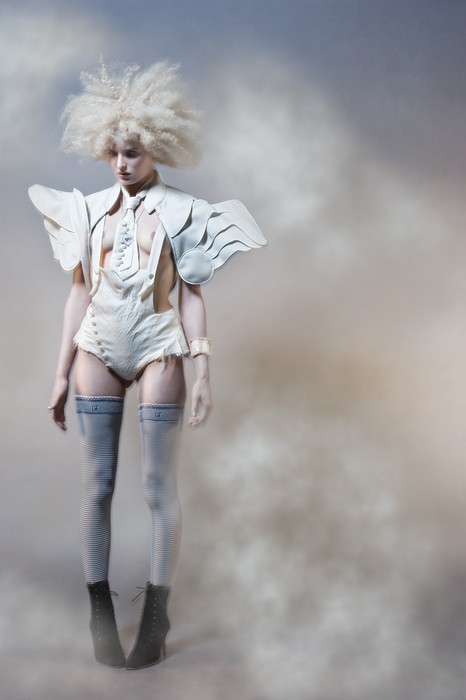
Fashion and Architecture
Two of the most enduring remnants of society that feature as an evident and omni-present mirroring of society are the towering structures and Architectural ruins of past civilizations and the clothing humanity wore throughout recorded and pre-recorded history.
However what is also fascinating is that fashion like architecture and industrial design depend on structural design, which enables complex forms to maintain their integrity, allowing fashion designers to go beyond what one might consider conventional fashion architecture.
Here is an review from Design Week discussing the book by Bradley Quinn called “The Fashion of Architecture”
‘We’ve always admitted the links between car design and architecture, but buildings and fashion? It takes some bravery to talk of fashion in terms beyond superficial styling to clothing design innovations in the same breath as an architectural legend, but in doing so Quinn proves that the two disciplines are intertwined in more ways than we might think. The Fashion of Architecture reveals congruencies that many (in both industries) might prefer to ignore… to their peril.’ Henrietta Thompson, Editor, Blueprint ‘Bradley Quinn traces the structures and spatial boundaries that are the common guidelines of fashion designers and architects and succeeds in pinpointing the similarities and differences these creative fields have gone through in the last century. “The Fashion of Architecture” is an accurate and detailed account of their mutual influences.’ Boris Moshkovits, Berliner Magazine ‘Bradley Quinn has written an original and insightful study of what is often a murky subject, superficially handled–the productive dialogue of fashion, art, and architecture. Larger thematic discussions alternate with fascinating case studies of individual designers, artists, architects–even department stores, to provide a host of new observations and genuine connections that were, until now, quiteobscure. The book is intended for a general readership, and should also serve well audiences in cultural studies, design, art and architecture.’ Susan Sidlauskas, University of Pennsylvania ‘The Fashion of Architecture…traces the inspirational overlap between high fashion and cutting-edge architecture. Interviews with Hussein Chalayan, Shelly Fox, Zaha Hadid Architects and Rem Koolhaas, among others, examine how pliable metals, membrane structures, and lightweight plastics and glass borrowed from building design crop up in the creation of Couture garments.’ Design Week
I could not agree more with the fact that Architecture, Industrial Design and Fashion are intertwined and they continue by saying,
‘Architecture is making its presence felt in cutting-edge fashion. The pliable metals, membrane structures, lightweight glasses and plastics used in building construction are creeping onto the catwalk. As they do so, their impact on recent textile developments has produced fabrics that enable clothing to act as individual climate-controlled environments that can exchange information with embedded sensors, resulting in wearable dwellings that act as both shelter and clothing. At the same time, architects are borrowing the techniques of pleating, stapling, cutting and draping from traditional tailoring to design buildings that are flexible, interactive, inflatable and even portable. Although the relationship between architecture and fashion was recognized more than a century ago, the connection between them has rarely been explored by historians, designers or practicing architects. “The Fashion of Architecture” is the first attempt to investigate the contemporary relationship between architecture and fashion in considerable depth, by examining the ideas, imagery, techniques and materials used by visionaries such as Martin Margiela, Issey Miyake, Alexander McQueen, Tadao Ando and Daniel Libeskind. As mavericks ranging from Hussein Chalayan and Rei Kawakubo to Rem Koolhaas and Zaha Hadid describe architectures role in the formation of fashion identities, new readings of both areas emerge. Probing and far-reaching in its content, “The Fashion of Architecture” is the most comprehensive study of this exciting area to date. ‘
If anyone is interested in a greater understanding of the complexities of fashion design, this might be an excellent way of orienting yourself to the subject.

